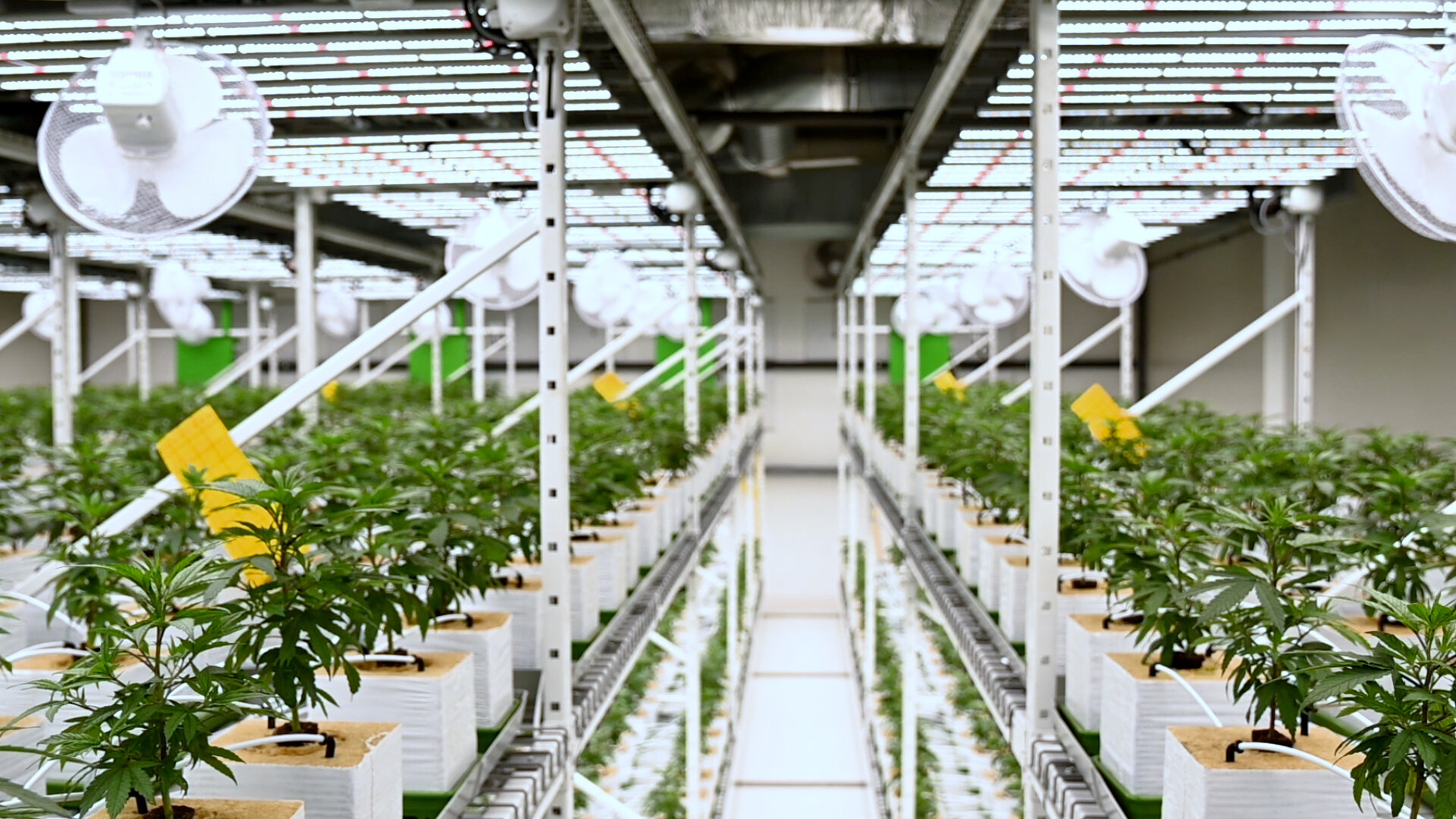Oct 20, 2020
3 Ways To Maximize Yield In Indoor Farming
Indoor farming presents a range of different challenges to crop yields than outdoor farming methods.
A prominent one being the limitation of space. When growing indoors, Montel’s high-density vertical mobile farming systems maximize your space. Not only this, the systems incorporate lighting, irrigation, air circulation, and monitoring equipment into your racking. Best of all, vertical indoor farming systems are built to optimize the vertical and the horizontal, turning every cubic inch into usable, growable space.
Montel works alongside farmers and agricultural experts to engineer the strongest, smartest, and most efficient vertical farming systems on the market. Our racks allow you to add more bedspace and profit to your existing grow.
Choosing your racking system is the first step in maximizing your indoor grow!
Know how to get the most out of your LEDs

For fuller, more plentiful crops, indoor farmers need the right lighting and knowledge to use lighting in the proper way.
LED lights split the difference between compact fluorescent lights, which have a lower lumen-to-watt ratio than LEDs, and high-pressure sodium lights (also known as high-intensity discharge lights) which are a widely popular and cheaper alternative, but more expensive to maintain.
To maximize yield, LEDs need to be an appropriate distance from the plants so that they receive a suitable amount of light photons whilst not creating too much heat on the leaf’s surface. The appropriate light spectrum should also be used to trigger the desired response in your plants. Different spectra will promote different physiological responses in your crop relating to physical growth and type of growth (biomass vs reproductive growth).
Control your climate as precisely as possible

Part of the allure of indoor farming is the lack of surprises—you don’t have to worry about a sudden drought or a devastating cold front destroying your crops when it’s you who controls the growing environment.
How much of a difference can climate control make? Well, if extreme weather accounts for thirty percent of global yield reductions, and it does, then a lot! Additionally, non-extreme normal variation in weather also negatively impacts the speed at which plants grow. Indoor farming effectively removes a variable that has plagued farmers since the dawn of agriculture.
But it’s not enough to set a grow room to room temperature and hope for the best. Climate control technology can harness exact applications of temperature and humidity to nurture plants throughout their life cycle. Setting aside that all plants have different optimal climate profiles, the seeding, vegetation, and flowering stages all call for different levels of air circulation, temperature set points, irrigation , and humidity levels. Indoor farming and a climate control system will help the operator learn the best ways to manage their crop at the different stages of plant development and, over time, optimize production to meet their goals.
Understand the nutrients your plants need

Like climate control, nutrient control is an additional step growers can take to help take the guesswork out of farming. When you have a large outdoor field of plants, the nutrient profile of the soil may vary from square foot to square foot. When growing indoors in soilless growth media, it’s important that your plants are receiving the right nutrients. Using hydroponics and precise nutrient application, a grower can ensure that each plant in the crop receives a similar cocktail of nutrients, which helps ensure a productive harvest.
Paying close attention to your plants and what their leaves tell you is another very important component of being a good grower. If your plants are missing any nutrients or receiving too much, they’ll be quick to let you know via leaf or vein discoloration, or signs like tip burn. By learning the telltale signs of nutrient deficiencies and drafting a plan for combating deficiencies quickly and surgically, you’ll never lose an ounce of your yield.
FURTHER READING
ADVANCING SUSTAINABILITY THROUGH SMART GREENHOUSE DESIGN

